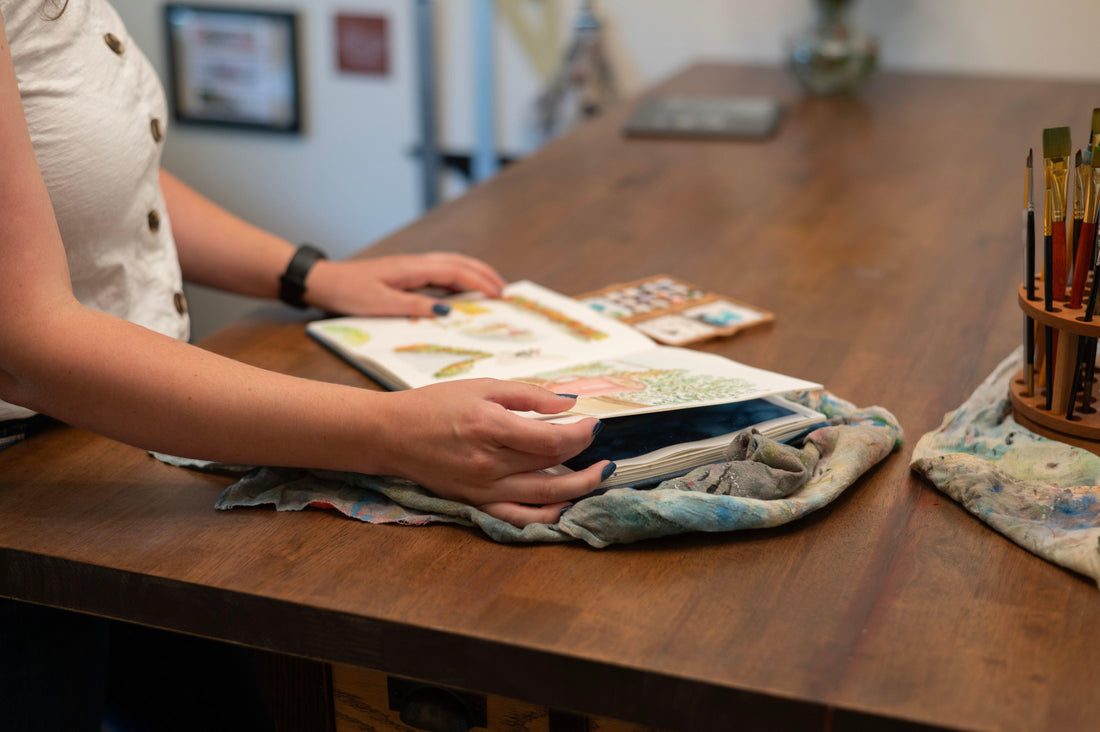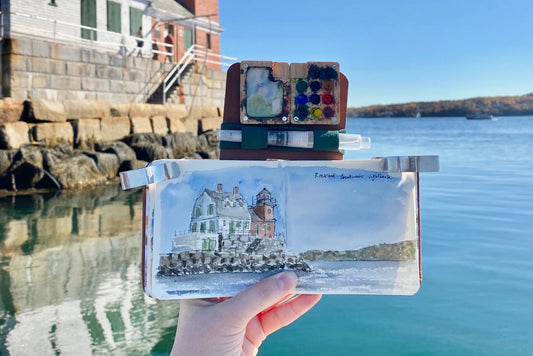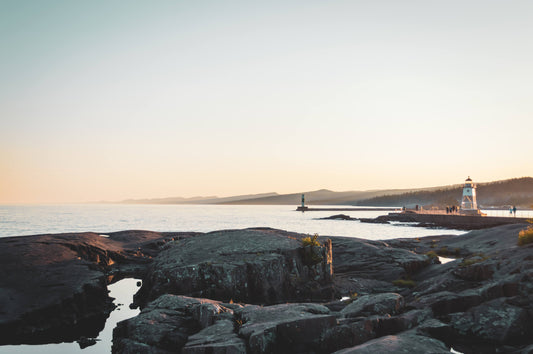
How to Overcome the Fear of a Blank Page
Share
If you've ever sat down to paint, only to stare at the blank page, unsure where to start, you're not alone. That pristine sheet of watercolor paper can feel intimidating—like it demands perfection.
But here’s the truth: every artist, from beginner to expert, faces this feeling.
The key is to take that first step and get something—anything—onto the page. Here are some simple strategies to help you move past the fear and start painting with confidence.

1. Start with Play, Not Perfection
Instead of aiming for a finished masterpiece, start with something low-pressure.
Try making random brushstrokes, color swatches, or simple gradients. In this tutorial, I lead you in a fun exercise with easy circles and doodles!
Let yourself explore how the paint moves and blends without worrying about the outcome.
2. Use a Pre-Drawn Image
If drawing feels like a barrier, use a pre-drawn image to get started.
This removes the stress of composition and allows you to focus purely on the painting process.
My Paint Me Pages are designed for this exact purpose—giving you a starting point so you can enjoy painting right away. Check out the variety of subjects you can pick from here!
If you find you enjoy the pre-drawn assistance, I also create workbooks with 10 projects included. Each project has a pre-drawn image, full color example, written directions, and even a link to a full video tutorial.
3. Try a Warm-Up Exercise
Athletes stretch before a workout, and artists can benefit from warm-ups too. Fill a page with simple shapes, quick doodles, or loose washes of color.
These exercises help loosen your hand and ease you into a creative mindset.
I love this exercise to warm up my mixing muscles!
4. Paint a Background First
A completely white page can feel daunting, so break it up!
Lightly wet your paper and add a soft wash of color to create an abstract background.
Once dry, you can add details on top, turning it into a sky, a landscape, or even a floral composition.
Drawing silhouettes on a brightly colored sky is also great fun, and good practice! I've got five projects like that here in my free ebook.
5. Give Yourself Permission to Make Mistakes
One of the biggest reasons artists freeze up is the fear of making something “ugly.”
But guess what?
Every painting teaches you something, even the ones that don’t turn out as expected. Allow yourself to paint freely, knowing that practice is the real goal—not perfection.
Go watch some Bob Ross on YouTube and remember, "No mistakes, only happy accidents"
6. Follow a Guided Tutorial
If decision-making is what’s stopping you, follow a step-by-step tutorial. Having structure and guidance can make starting much easier.
I've got lots of free tutorials on YouTube to get you started. Check out my whole playlist of beginner watercolor tutorials!
Check out other fabulous watercolor artists like Amber Lane or Kristin Van Leuven.
7. Set a Timer
Give yourself just five minutes to put something on the page.
This short time frame removes pressure and helps you break the initial resistance. Often, once you start, you’ll naturally want to keep going.
8. Keep a “No-Pressure” Sketchbook
Have a dedicated sketchbook where the only rule is to experiment. This space isn’t for perfect paintings—it’s for trying new techniques, making mistakes, and enjoying the process.
I often paint in a sketchbook when I don't want the pressure of a finished masterpiece.
When someone on Instagram asked me to make a tutorial on sheep, you better believe I painted that in my sketchbook first to practice. I don't often paint animals so I needed a low pressure way to try it on my own first.
Even in my video tutorials, you'll often see me painting in a sketchbook!
Oh and you can see that finished sheep tutorial here.
9. Remember Why You Started
You’re painting because it brings you joy, curiosity, and creative fulfillment. The blank page isn’t a test—it’s an opportunity to explore, express, and enjoy the process.
So take a deep breath, pick up your brush, and make that first mark.
You’ve got this!
Do you struggle with the blank page? Let me know in the comments, or try one of these strategies and share your experience! If you're looking for more guidance, check out my beginner-friendly workbooks and courses to help you build confidence in your watercolor journey.



